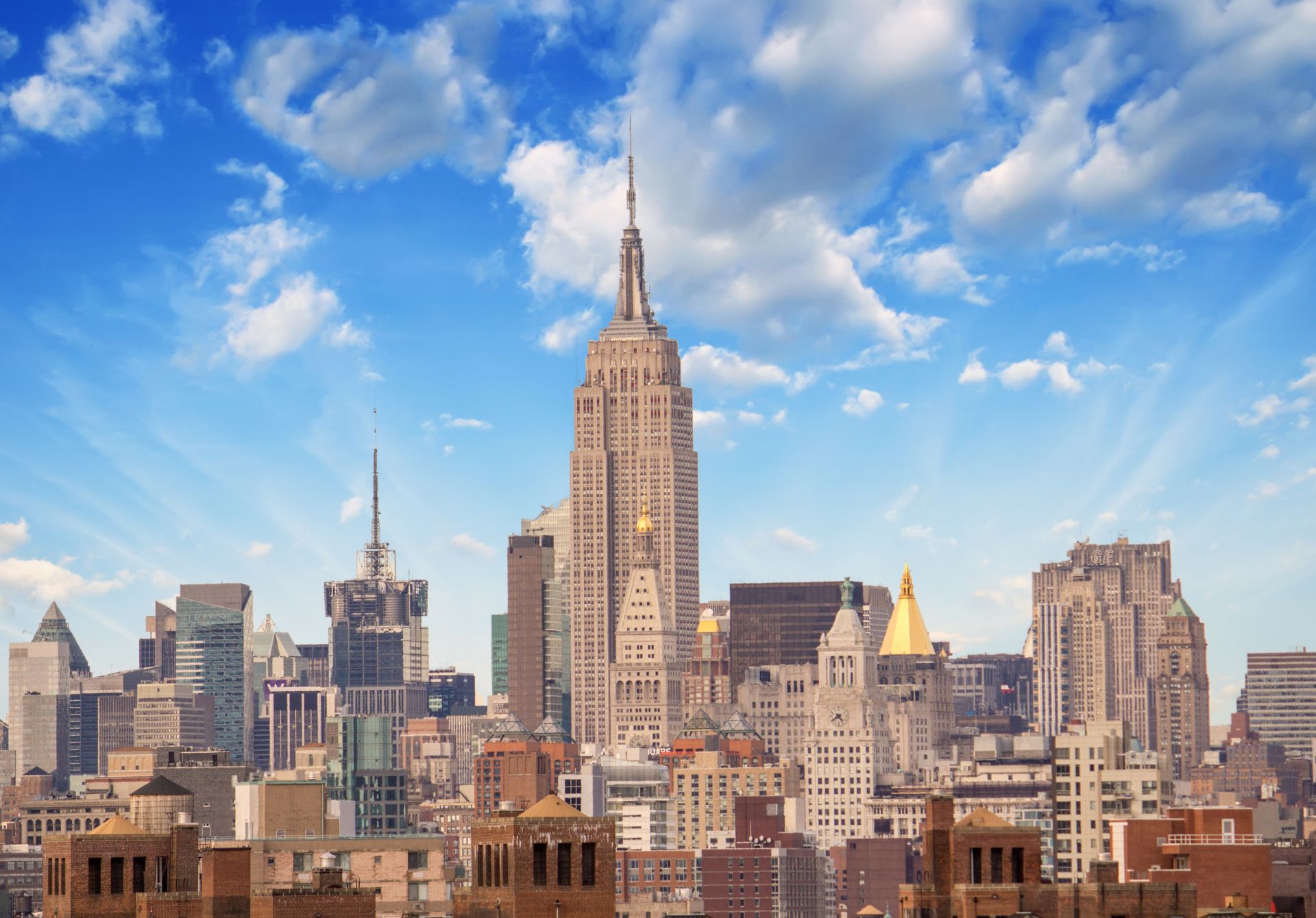Rising majestically above Manhattan’s skyline, the Empire State Building stands as one of the world’s most recognizable architectural achievements. Completed in 1931 during the height of the Great Depression, this 102-story masterpiece was constructed in just 410 days, an extraordinary feat that demonstrated American resilience and ingenuity during one of the nation’s most challenging periods. The building’s construction involved 3,400 workers and approximately 7 million man-hours of labor, setting new standards for skyscraper construction efficiency.
Architectural Marvel
Standing at 1,454 feet (including its spire), the Empire State Building held the title of world’s tallest building for nearly 40 years until 1970. The structure’s Art Deco design, conceived by architects Shreve, Lamb & Harmon, features a distinctive limestone facade with vertical lines and setbacks that comply with New York City’s 1916 Zoning Resolution. The building’s steel frame, containing 57,000 tons of steel beams and columns, has proven remarkably resilient, capable of swaying up to 1.5 inches in high winds without structural damage.
Engineering Innovation
The building’s construction introduced numerous innovative engineering solutions. Its foundation extends 55 feet below street level and rests on solid bedrock, providing exceptional stability. The structure incorporates a pioneering vertical transportation system with 73 elevators, capable of moving 10,000 people per hour. In an era before computer-aided design, the building’s wind resistance calculations were performed manually, yet have proven remarkably accurate over nine decades of service.
Environmental Leadership
In recent years, the Empire State Building has emerged as a leader in environmental sustainability. A comprehensive retrofit completed in 2010 reduced the building’s energy consumption by 38%, saving approximately $4.4 million annually. The project included the replacement of 6,514 windows with high-performance glass, installation of smart energy management systems, and modernization of the building’s heating and cooling infrastructure. These improvements have earned the building LEED Gold certification, making it a model for sustainable retrofitting of historic structures.
Cultural Impact
Beyond its architectural significance, the Empire State Building has become deeply embedded in American popular culture. Featured in over 250 films, most notably “King Kong” (1933), the building attracts approximately 4 million visitors annually to its observation decks. Its tower lights, which began with a simple white beacon in 1932, now feature a sophisticated LED system capable of displaying 16 million colors, commemorating events and causes worldwide. The building’s image has been used on countless postcards, stamps, and souvenirs, making it one of New York City’s most photographed landmarks.
Economic Significance
As a commercial property, the Empire State Building houses over 1,000 businesses and generates more than $150 million in annual revenue. The building’s observatory alone accounts for approximately 40% of this revenue, demonstrating the enduring appeal of its panoramic views of New York City. Despite competition from newer skyscrapers, the building maintains high occupancy rates and premium rental values, testament to its prestige and central location.
The Empire State Building represents far more than just another skyscraper in Manhattan’s crowded skyline. It stands as a testament to American ambition, engineering excellence, and architectural innovation. From its rapid construction during the Great Depression to its modern role as a leader in environmental sustainability, the building continues to inspire and adapt to changing times. As it approaches its centennial, the Empire State Building remains not just a vital part of New York City’s infrastructure, but a symbol of human achievement that continues to capture imaginations worldwide.
